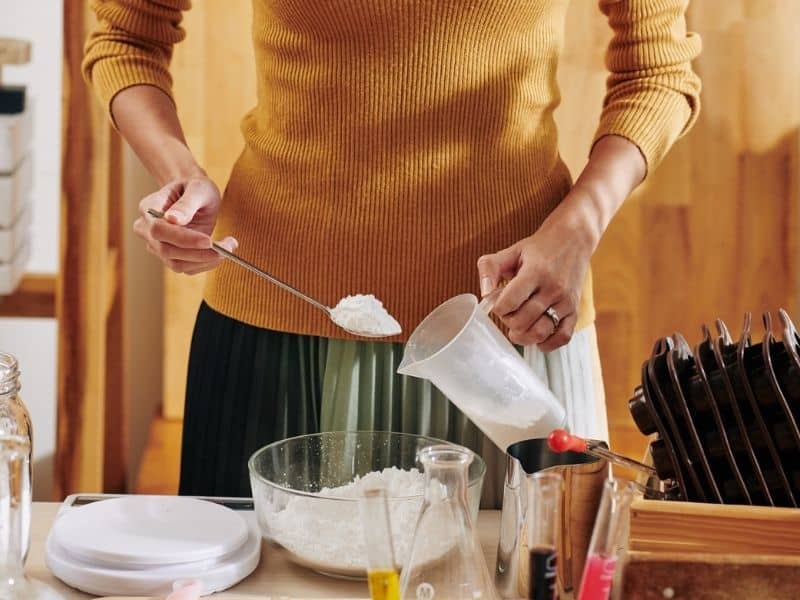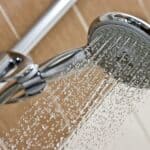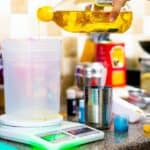Undissolved lye in soap is a big problem for many people. It can cause dry, itchy skin and an irritating odor. This can be uncomfortable and embarrassing to experience. Let’s take a closer look at some of the causes and fixes for undissolved lye in soap.
Why You Should Fix Undissolved Lye
Before knowing the causes and fixes you can apply in Undissolved Lye in soap, you must know why fixing it is important for soap makers.
Fix It For Safety
The first reason is safety. Undissolved lye can cause irritation and even chemical burns, especially if it’s not diluted enough in the soap mixture. The second reason is quality. A batch of soap with undissolved lye will often be harsh and irritating to the skin, and it may also not lather as well as soap should.
Quality Control
In addition, undissolved lye can cause the soap to darken prematurely and even to crack or crystallize. When this happens, it could lower the quality of your soap bars, and if you are selling them to many people, they might not buy from you again since your soap bars are of poor quality.
Furthermore, this problem can also lead to safety hazards. If the lye crystals are large and not well-dissolved, they can cause the soap to crack or shatter while in storage or during use. That means your soap bars might not be meant to be sold in bulk since people would not be able to enjoy your soap bars to the fullest because of this problem.
Wasted Ingredients
Lastly, undissolved lye can also lead to a loss in productivity. This means that if your soap mixture has undissolved lye, not all of the soap will be usable. Some of it may end up being wasted, and this is something you want to avoid as much as possible.
Now that you know why you should fix this problem let’s discuss the different causes of this happening to soap bars.
Causes of Undissolved Lye in Soap
A lot of factors cause Undissolved Lye in soap. This can be because of a missing ingredient in the soap-making process. If there is an ingredient missing, the lye will not dissolve and cause the soap to be unusable. That is why you must make sure that you have the right ingredients before making soap, especially in big batches. You would not want to waste a huge batch because you missed putting a key ingredient in the mix.
Some of the missing ingredients that can cause Undissolved Lye in soap include fragrance oils, colorants, or essential oil. If any of these are missing, the lye will not dissolve and cause the soap to be unusable.
Wrong Measurements
Another reason why Undissolved Lye in soap can happen is because of incorrect measurements. When you are measuring out your ingredients, if you do not get the measurements correct, it can cause the lye not to dissolve. If there is too much or too little of an ingredient, it can throw off the chemical reaction that needs to happen for the soap to be made.
When making soap, it is important to be precise with your measurements. This will help to ensure that the lye dissolves properly and that the soap is not ruined.
Water Too Cold
Undissolved Lye in soap happens because the water temperature is too low. When the lye dissolves, it must be in a warm environment. If the water temperature is too low, the lye will not dissolve, and the soap will be unusable. Thus, you must ensure that you use water at the right temperature in soap making.
Impurities In The Water
Lastly, Undissolved Lye in soap happens because of impurities in the water. If there are impurities in the water, it can cause the lye not to dissolve and the soap to be unusable. This is why you must make sure that you use clean water when making soap.
Knowing the causes behind Undissolved Lye in soap is important because this is where you will start fixing the problem before it becomes worse.
Fixes for Undissolved Lye in Soap
Undissolved Lye in soap happens, but that does not mean you have ruined the entire batch because of it. This usually happens, so there are fixes and tips that you can apply to remedy or save the entire mixture from getting spoiled and ruined altogether. Of course, there are fixes that you can apply when this happens. Here are some of the known fixes for Undissolved Lye in soap.
Add More Water
For one, you can add more water to the mixture for the lye to dissolve. Suppose you are experiencing this issue because the water temperature is too low. In that case, adding more water will help raise the temperature and make it conducive for the lye to dissolve.
Add A Little Vinegar
Another fix for Undissolved Lye in soap is adding a little bit of vinegar to the mixture. This will help break down the impurities in the water and make it easier for the lye to dissolve.
Stirring The Mixture
You can also try stirring the mixture more. This will help create more heat and agitation, making it easier for the lye to dissolve.
Warm The Mixture
You can try putting the mixture in a warmer environment. If you cannot raise the water temperature by adding more water, you can put the mixture in a place where it will be warmer. This can help speed up the chemical reaction and make it easier for the lye to dissolve.
Use A Immersion Blender
Another useful fix for this problem is to use a stick blender. If you are having trouble stirring the mixture and getting it to dissolve, then using a stick blender can help to speed up the process.
Change Recipes
Lastly, you can try making soap with a different recipe. If you have tried all of these fixes and the lye is still not dissolving, then it might be because the recipe you are using is not conducive for soap making. You might want to try using a different recipe that will be easier for the lye to dissolve in.
Understand The Process
It is important to be aware of the different factors that can cause Undissolved Lye in soap when making soap. If you know these cases, you can apply the appropriate fixes so that your soap does not get ruined.
Thankfully, there are fixes for Undissolved Lye in soap, and it is not always a recipe for disaster. With these tips, you can save your soap from being ruined and make sure it turns out the way you want it to.
Frequently Asked Questions
There are several causes for undissolved lye in soap. One is that the water temperature is too low. Another reason can be because of impurities in the water. Lastly, undissolved lye can happen because of a recipe that is not conducive for soap making.
There are several fixes for undissolved lye in soap. You can add more water to the mixture, add vinegar to the mixture, stir the mixture more, warm the mixture, or use a stick blender. You can also try changing recipes.
If the lye is still not dissolving, you can try adding more water to the mixture, adding vinegar to the mixture, stirring the mixture more, warming the mixture, or using a stick blender. You can also try changing recipes.
No, undissolved lye in soap is not always a recipe for disaster. There are several fixes that you can apply so that your soap does not get ruined.
Conclusion
In conclusion, undissolved lye in soap can cause your soap to be ruined. However, there are several fixes that you can apply in order to prevent this from happening. With these tips, you can save your soap and make sure it turns out the way you want it to.






